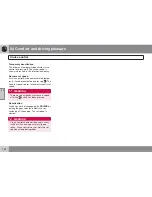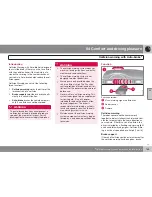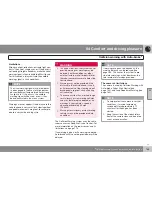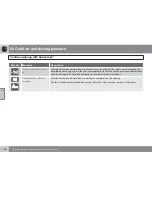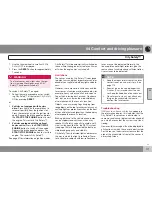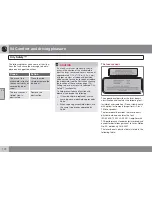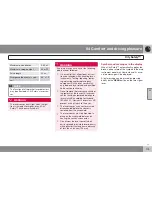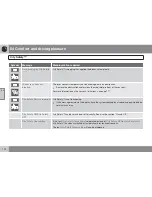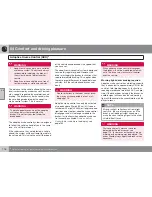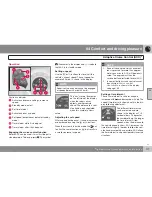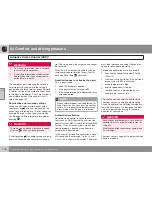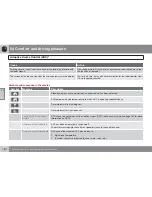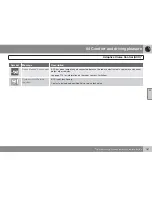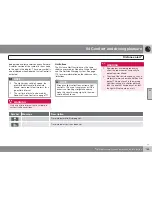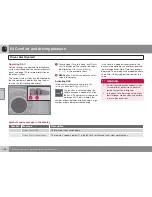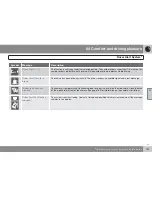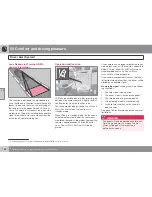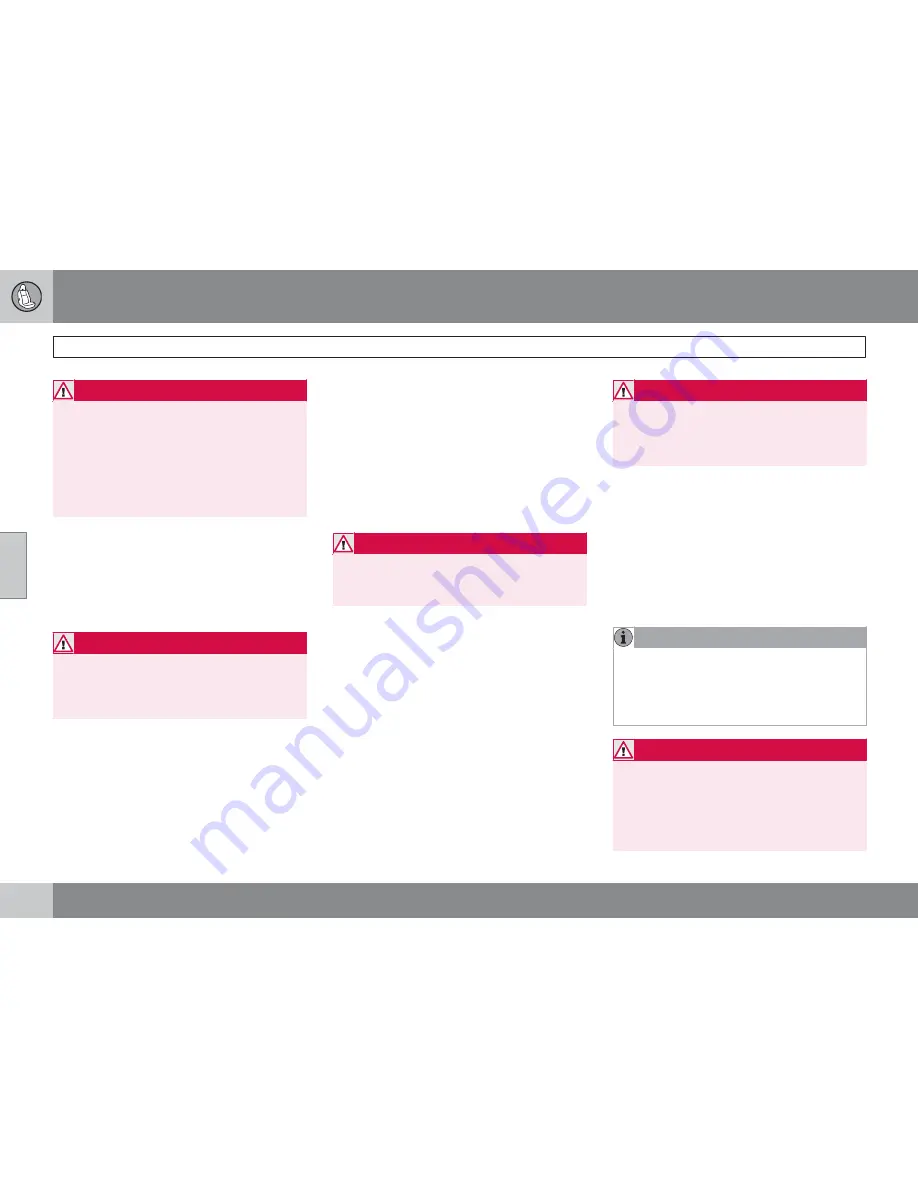
04 Comfort and driving pleasure
Adaptive Cruise Control (ACC)*
04
176
*
Option/accessory, for more information, see Introduction.
WARNING
•
Adaptive cruise control is not a collision
avoidance system. The driver is always
responsible for applying the brakes if
the system does not detect another
vehicle.
•
Adaptive cruise control does not react
to slow moving or stationary vehicles.
The distance to the vehicle ahead (in the same
lane) is measured by a radar sensor. Your vehi-
cle's speed is regulated by acceleration and
braking. The brakes may emit a sound when
they are being modulated by the adaptive
cruise control system. This is normal.
WARNING
The brake pedal moves when the adaptive
cruise control system modulates the
brakes. Do not rest your foot under the
brake pedal.
The adaptive cruise control system is designed
to follow the vehicle ahead of you in the same
lane, at a set time interval.
If the radar sensor has not detected a vehicle
ahead, the system will then attempt to maintain
the set speed. This is also the case if the speed
of the vehicle ahead exceeds the speed that
you have set.
The adaptive cruise control system is designed
to smoothly regulate speed. However, the
driver must apply the brakes in situations that
require immediate braking. This applies when
there are great differences in speed between
vehicles, or if the vehicle ahead brakes sud-
denly.
WARNING
Due to limitations in the radar sensor, brak-
ing may occur unexpectedly or not at all,
see page 178.
Adaptive cruise control can only be activated
at speeds above 20mph (30 km/h). If speed
falls below 20 mph (30 km/h) or if engine speed
(rpm) becomes too low, adaptive cruise control
disengages and will no longer modulate the
brakes. In situations when adaptive cruise con-
trol cannot be activated
Cruise control
Unavailable
is shown in the display, see
page 180.
WARNING
When adaptive cruise control disengages,
the brakes will not be modulated automati-
cally. The driver must assume full control
over the vehicle.
Warning light-driver braking required
Adaptive cruise control has a braking capacity
that is equivalent to approximately 30% of the
vehicle's total braking capacity. In situations
requiring more brake force than ACC can pro-
vide, if the driver does not apply the brakes, an
audible signal will sound and a red warning
light will illuminate in the windshield to alert the
driver to react.
NOTE
Strong sunlight, reflections, extreme light
contrasts, the use of sunglasses, or if the
driver is not looking straight ahead may
make the visual warning signal in the wind-
shield difficult to see.
WARNING
Cruise control only warns of vehicles
detected by the radar sensor, see
page 178. In some cases there may be no
warning or the warning may be delayed. The
driver should always apply the brakes when
necessary.
Summary of Contents for XC60 2009
Page 1: ...VOLVO XC60 Owner s Manual Web Edition...
Page 2: ......
Page 7: ...Contents 7...
Page 15: ...01 SAFETY...
Page 53: ...01 Safety 01 53...
Page 54: ...54 Remote key and key blade 56 Keyless drive 63 Locks 66 Alarm 68...
Page 55: ...02 LOCKS AND ALARM...
Page 71: ...02 Locks and alarm 02 71...
Page 73: ...03 YOUR DRIVING ENVIRONMENT...
Page 74: ...03 Your driving environment Instruments and controls 03 74 Instrument overview...
Page 123: ...04 COMFORT AND DRIVING PLEASURE...
Page 200: ...04 Comfort and driving pleasure Passenger compartment convenience 04 200 Storage spaces...
Page 205: ...05 DURING YOUR TRIP...
Page 225: ...05 During your trip 05 225...
Page 227: ...06 MAINTENANCE AND SPECIFICATIONS...
Page 250: ...06 Maintenance and specifications Fuses 06 250 Engine compartment...
Page 284: ...06 Maintenance and specifications Label information 06 284 Location of labels...
Page 302: ...07 Index 07 302...
Page 303: ......
Page 304: ...Kdakd 8Vg 8dgedgVi dc IE JH6 8VcVYV 6I Eg ciZY c HlZYZc iZWdg 8deng i Kdakd 8Vg 8dgedgVi dc...

